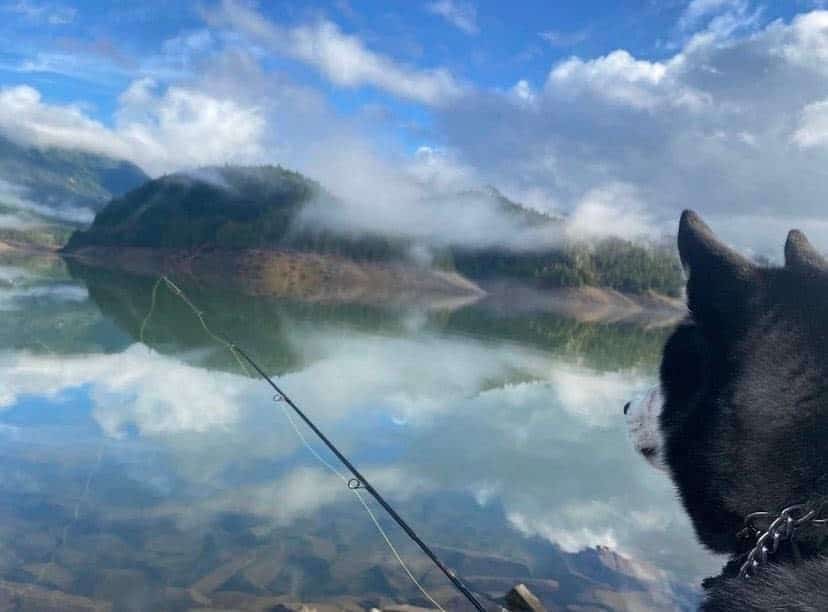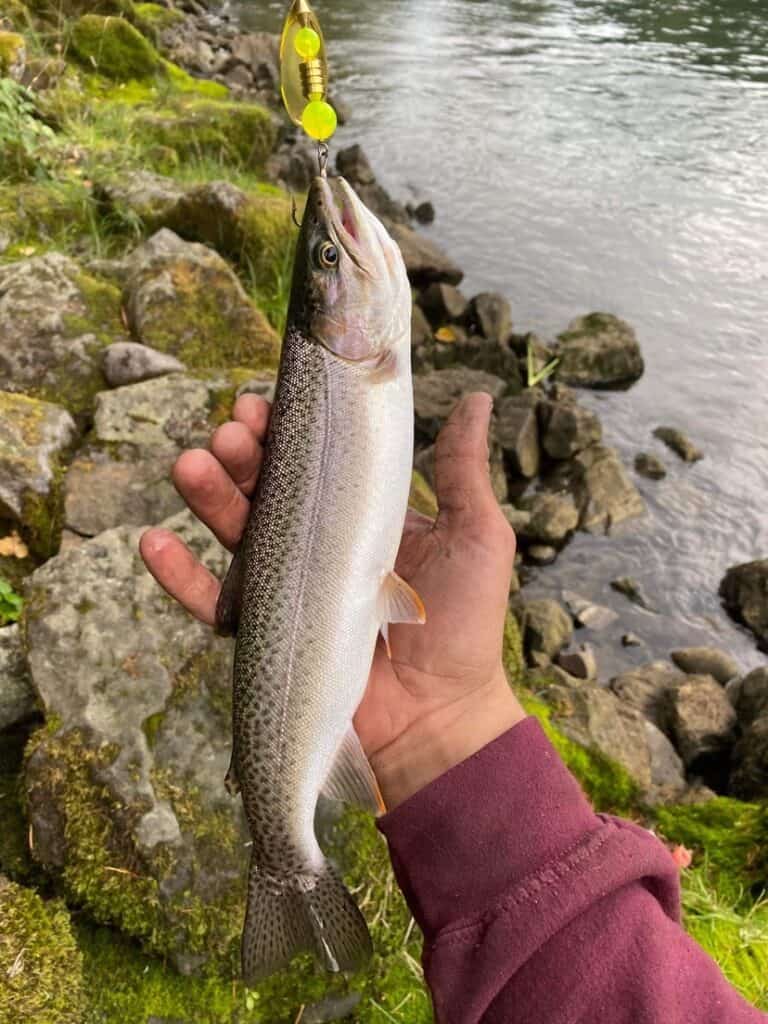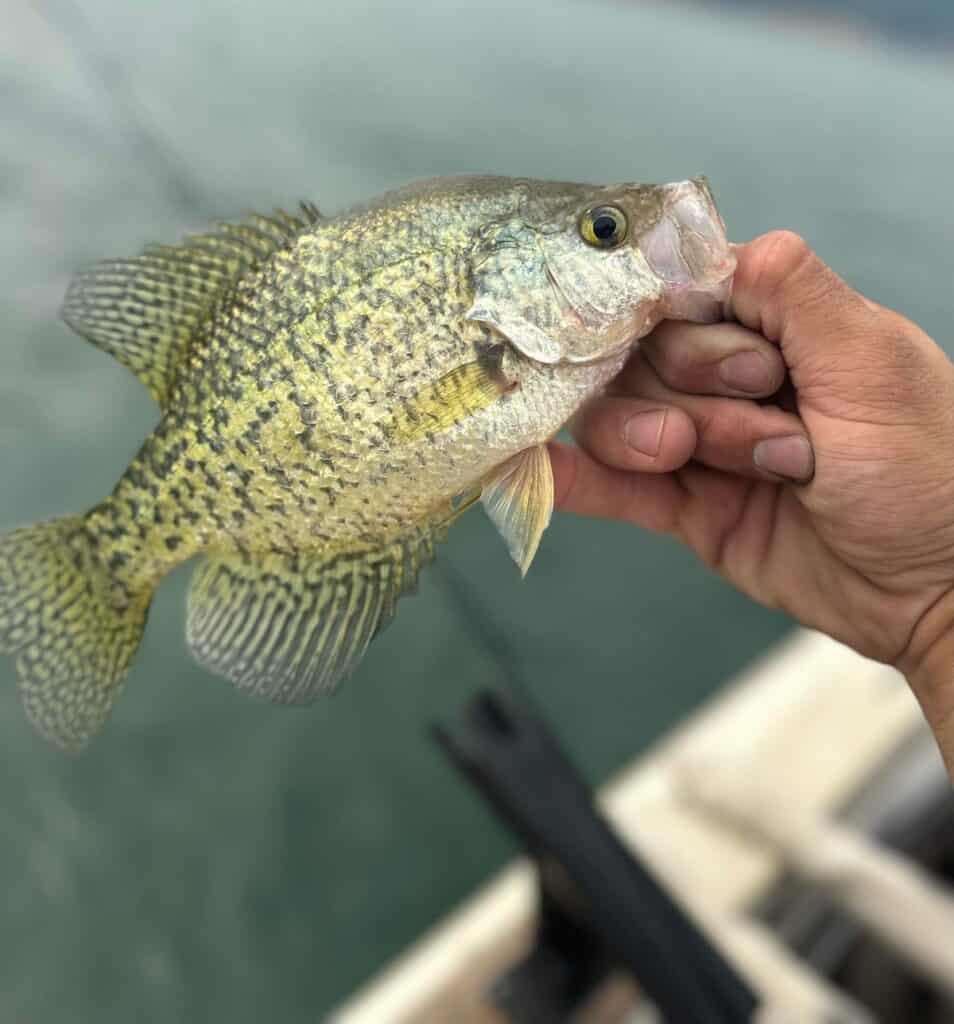This 2,700-acre reservoir just outside of Oakridge in Oregon’s central Cascade Mountains offers some of the most reliably good rainbow trout fishing in the area.
When the Oregon Department of Fish and Wildlife stopped planting hatchery trout in several nearby streams, all those keepers were redirected to the reservoir.
The man-made lake is also planted with fingerling rainbow trout and chinook salmon and has naturally reproducing warmwater fish, including crappie.
The reservoir is only about three miles outside of Oakridge, taking the well-marked exit off Highway 58 just past town and less than an hour’s drive from Eugene.
Access here is simply excellent.
Bank anglers will find short trails from roads that entirely ring the reservoir.
Find nice spots to launch your boat at Packard Creek Campground (located on the west side off Forest Service Road 21, at about mid-lake) and another ramp at the southern end of the reservoir, near where the Middle Fork flows in.
Trout Fishing
Hatchery-reared rainbows are the primary target for anglers here, thanks to the generous stocking program and conditions that allow trout to thrive year-round.
The reservoir is open to fishing all year and can be pretty good much of the year, but the highest catches will begin after the first stocking truck visits (lately, that has been in February) and on throughout the spring and perhaps into early summer.
When the hot weather hits, the smaller population of remaining trout will often move to cooler or deeper waters and be tougher to catch.
Fishing often picks up again in September as the water starts to cool, especially if ODFW brings another truckload of trout.
See the trout-stocking schedule below for this year’s plan.
September and October can be an especially pleasant time of year to go fishing in the mountains, with fewer crowds and cooler but often pleasant weather.
Note that the water may be drawn down a fair bit by fall, and in poor water years, access isn’t quite as good as when the reservoir is near full pool earlier in the season.
Bank anglers will find success in many spots here from just about any short trail to the shore.
Jeff Ziller, ODFW fish biologist based in Eugene, suggested that a couple of reliably good areas to try are along the east bank of the Middle Fork Willamette Arm toward the upper reservoir or at C.T. Beach on the Hills Creek Arm.
You can tell from the pathways and openings where anglers often set up shop.
The easiest recipe for success is to find a little bit of a point and pitch out some PowerBait or other bait with the help of a slip sinker and wait for dinner to come calling.
Casting and retrieving spinners and spoons also catches trout.
For more details on how to catch these fish, see Trout Fishing: Basic How-To Techniques and Tips.
Boat fishing also can be very good for trout here and allows anglers to cover more water. Boat fishing is particularly attractive as the water warms and the fish move deep, where they are tougher to catch from shore.
While still-fishing is also productive, boats often find that trolling lures or baits, sometimes in behind a set of flashers, can pick up widely dispersed fish.
For example, the Wedding Ring spinner with a chunk of nightcrawler pulled behind a Ford Fender to attract attention is a pretty standard method. Extra weight or a down rigger may help reach deeper fish.
Note that some wild trout (including highly protected bull trout) may occasionally drop into the reservoir from the tributary streams, and all wild trout must be immediately released unharmed.
Put another way: Trout here must have a hatchery-clipped and healed adipose fin to retain.
If interested in other trout fishing options nearby, Salmon Creek has a nice stocked trout fishery, and the Middle Fork Willamette River, Hills Creek and Salt Creek offer less crowded fishing for wild trout (including the opportunity for modest harvest in Hills and Salt creeks).
If you are interested in stillwater trout, check out Best Rainbow Trout Fishing Lakes in Oregon.
Chinook Salmon Fishing
Hatchery salmon (with clipped adipose fins) are planted here to provide a bonus fishery.
These fish become land-locked and spend their lives in the lake, where they can be retained by those skilled or lucky enough to catch them. Hatchery salmon under 24 inches are counted as part of the trout limit.
These can be targeted much like kokanee, trolling lures deep. They also will hit fish-shaped crankbaits and spoons, also typically trolled.
If you want to increase your odds of catching a landlocked salmon in a lake setting, we would suggest checking out the excellent fishing for kokanee (landlocked sockeye rather than Chinook) to be found at Odell Lake, Green Peter Reservoir or many other waters listed in our Oregon’s Best Kokanee Fishing index.
Crappie Fishing
Though a traditional trout lake, Hills Creek Reservoir also has a decent population of warmwater fish.
Crappies are among the most targeted of these non-native species, especially in late April and May.
Crappie love cover and the easiest cover here to identify is under some of the reservoir’s bridges, including in the Hills Creek Arm.
Also, check out potential crappie spots under bridges along FS Road 21 along the Middle Fork Willamette Arm.
Crappie fishing with small jigs or other methods under the bridges can be particularly good at night, but Ziller said there have been reports that the atmosphere during this night fishery isn’t always as family-friendly as some anglers would want.
Find the Best Crappie Fishing in Western Oregon.
Largemouth Bass Fishing
Hills Creek Reservoir is not widely considered a go-to bass fishery, but anglers have discovered in recent years that there are, in fact, some lunkers to be found here, possibly taking advantage of stocked fingerling trout and naturally reproducing crappie, sunfish, and other forage.
During the spring, especially, bass are likely to be close to shore in spawning mode and apt to strike out aggressively at lures that invade their space, such as spinnerbaits.
Bass generally will move into deeper water after they finish spawning. They can regularly be located off sunken points, where they can find cover to ambush passing prey.
Soft plastics and crankbaits imitating forage, including small fish and crayfish, should produce strikes, and perhaps topwater lures might entice some vicious strikes during the warmest evenings.
Find the Best Largemouth Bass Fishing in Western Oregon and Best Largemouth Bass Fishing in Central and Eastern Oregon, with both articles containing excellent fisheries within a reasonable drive of the Willamette Valley.
Other Warmwater Fish
Hills Creek Reservoir also has the ubiquitous bullhead catfish. These tend to run small in most waters and are largely ignored by many anglers.
Nevertheless, they can be decent eating when caught from clean water like this and they also can provide consistent action, especially when the trout aren’t cooperating and you have young anglers prone to boredom.
A worm fished on the bottom should do the trick, often in relatively shallower and warmer water.
Learn more about Oregon catfish fishing.
The reservoir also has a population of bluegill, also lightly fished here but having the potential for some fun, with a surprisingly good fight for their typically small size.
Bluegill are often caught in shallow water, particularly if you can find weeds or other cover nearby. The reservoir’s smaller coves might be a good place to start.
A simple bobber and bait rig is often the ticket. Bluegill have small mouths and a penchant for eating worms and insects; red worms, garden worms, a bit of nightcrawler, mealworms, or crickets all are excellent bluegill bait.
Bait tightly to the hook because these fish are accomplished thieves.
2024 Hills Creek Reservoir Trout Stocking
| Stocking Schedule | Total |
| Feb 19-23 | 3,563 |
| Mar 11-15 | 3,563 |
| Apr 1-5 | 2,840 |
| Apr 29-May 3 | 2,840 |
| Sep 30-Oct 4 | 2,800 |
Return to Oregon Trout Fishing page
Find more fishing spots in eastern Lane County
Oregon Resources
ODFW Weekly Fishing Report
ODFW Trout Stocking Schedule
Oregon Fishing Regulations
National Weather Service



